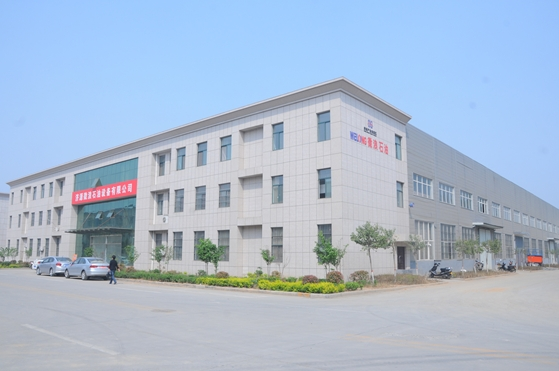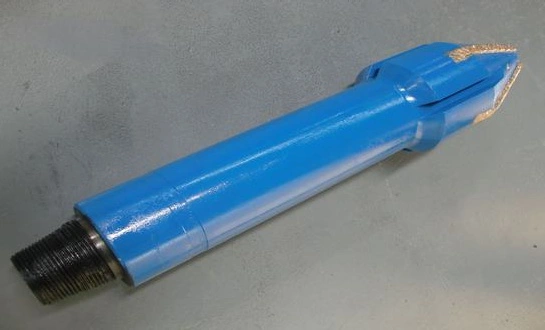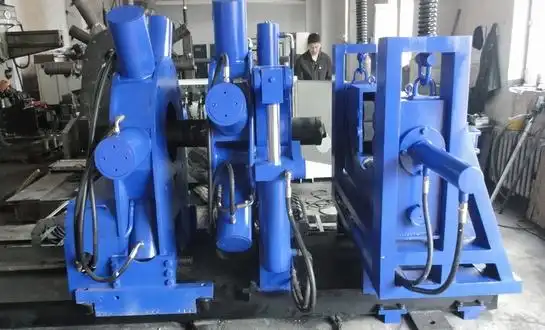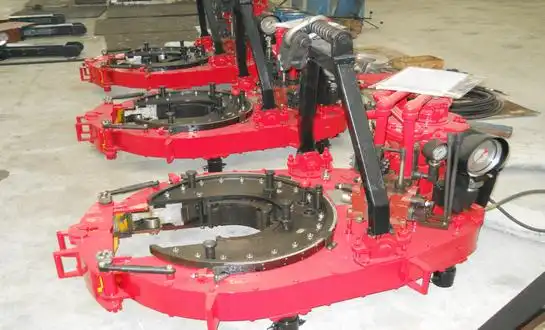How Does Thermal Expansion Affect Work Roll Performance in Hot Rolling?
Thermal expansion is a critical factor that significantly impacts work roll performance in hot rolling processes. As the rolls come into contact with heated metal, they experience rapid temperature changes, leading to thermal expansion and contraction. This phenomenon can have profound effects on the rolling process and the final product quality.
Thermal Gradients and Roll Profile Changes
During hot rolling, the surface of the work rolls heats up more quickly than the core, creating thermal gradients across the roll diameter. These gradients cause uneven expansion, resulting in changes to the roll profile. The roll barrel may develop a convex shape, known as "roll crowning," which can affect strip flatness and thickness uniformity. To compensate for these thermal effects, roll manufacturers often incorporate advanced cooling systems and employ sophisticated roll grinding techniques to maintain optimal roll profiles throughout the rolling campaign.
Impact on Roll Wear and Lifespan
Thermal expansion also influences the wear characteristics of work rolls in hot rolling. The repeated heating and cooling cycles can lead to thermal fatigue, which manifests as surface cracks or spalling. This thermal damage accelerates roll wear and can significantly reduce the lifespan of the rolls. To mitigate these effects, roll designers must carefully select materials with appropriate thermal properties and implement effective cooling strategies to manage temperature fluctuations during rolling operations.
Strategies for Mitigating Thermal Expansion Effects
To optimize work roll performance in hot rolling, manufacturers employ various strategies to manage thermal expansion: 1. Advanced cooling systems: Implementation of sophisticated roll cooling technologies, such as high-pressure water sprays and internal cooling channels, helps maintain more uniform temperature distribution across the roll. 2. Material selection: Choosing roll materials with favorable thermal properties, such as high thermal conductivity and low thermal expansion coefficients, can minimize the impact of temperature fluctuations on roll performance. 3. Roll profile control: Utilization of computer-controlled roll grinding systems allows for precise adjustment of roll profiles to compensate for thermal expansion effects during rolling campaigns. 4. Thermal modeling: Advanced thermal modeling techniques enable accurate prediction of roll thermal behavior, allowing for proactive adjustments to rolling parameters and cooling strategies.
Key Differences in Work Roll Material Selection for Hot vs. Cold Processes
The selection of appropriate work roll materials is crucial for optimizing performance in both hot and cold rolling processes. The distinct operating conditions in each process necessitate specific material properties to ensure roll longevity, product quality, and overall process efficiency.
Material Requirements for Hot Rolling Work Rolls
Hot rolling work rolls operate under extreme conditions, including high temperatures and significant thermal cycling. Key material requirements for hot rolling work rolls include: 1. High-temperature strength: The material must maintain its mechanical properties at elevated temperatures to withstand the forces involved in hot rolling. 2. Thermal shock resistance: Ability to withstand rapid temperature changes without cracking or spalling is crucial for roll longevity. 3. Wear resistance: The material should exhibit good wear resistance at high temperatures to maintain roll surface quality throughout the campaign. 4. Oxidation resistance: Hot rolling environments are often oxidizing, requiring materials that can resist surface degradation under these conditions. Common materials used for hot rolling work rolls include high-chromium steel, high-speed steel, and various grades of cast iron with carbide-rich microstructures.

Material Considerations for Cold Rolling Work Rolls
Cold rolling work rolls operate at lower temperatures but are subject to higher specific pressures and require excellent surface finish. Key material considerations for cold rolling work rolls include: 1. High hardness: The material must possess high surface hardness to resist wear and maintain surface finish quality. 2. Compressive strength: Cold rolling involves high specific pressures, necessitating materials with excellent compressive strength. 3. Dimensional stability: Minimal thermal expansion and good resistance to plastic deformation are essential for maintaining roll geometry. 4. Surface finish retention: The ability to maintain a high-quality surface finish throughout the rolling campaign is crucial for product quality. Materials commonly used for cold rolling work rolls include high-carbon high-chromium steel, tungsten carbide, and various ceramic-coated rolls.
Balancing Performance and Cost in Roll Material Selection
Selecting the optimal work roll material involves balancing performance requirements with cost considerations. Factors to consider include: 1. Initial material cost: Higher-performance materials often come with a higher initial price tag but may offer better long-term value through extended roll life and improved product quality. 2. Roll life expectancy: Materials that offer longer campaign lengths can reduce downtime and roll change frequency, potentially offsetting higher initial costs. 3. Redressing capabilities: Some materials allow for multiple redressing cycles, extending the overall useful life of the roll and improving cost-effectiveness. 4. Product quality impact: Superior roll materials can contribute to improved product quality, potentially commanding higher prices or expanding market opportunities. By carefully evaluating these factors, manufacturers can optimize their work roll material selection to achieve the best balance of performance and cost-effectiveness for their specific rolling operations.
Impact of Roll Surface Finish on Strip Flatness in Cold Rolling
The surface finish of work rolls plays a critical role in determining strip flatness and overall product quality in cold rolling processes. Achieving and maintaining the optimal roll surface finish is essential for producing high-quality metal strips with consistent properties and appearance.
Relationship Between Roll Surface Finish and Strip Flatness
The surface finish of cold rolling work rolls directly influences the interaction between the roll and the metal strip during the rolling process. This interaction affects several key aspects of strip quality: 1. Friction control: The roll surface finish impacts the coefficient of friction between the roll and the strip, which in turn affects the rolling force and strip elongation. 2. Lubrication effectiveness: A properly finished roll surface helps maintain an adequate lubricant film, reducing wear and improving strip surface quality. 3. Strip shape control: The roll surface finish contributes to the ability to control strip shape, including crown and flatness. 4. Surface roughness transfer: The roll surface texture is partially transferred to the strip surface, influencing the final product's appearance and functional properties.
Optimizing Roll Surface Finish for Improved Strip Flatness
To achieve optimal strip flatness in cold rolling, manufacturers employ various techniques to control and maintain work roll surface finish: 1. Precision grinding: Advanced roll grinding technologies allow for precise control of roll surface roughness and profile. 2. Texturing methods: Techniques such as electron beam texturing (EBT) and laser texturing enable the creation of specific surface patterns that enhance lubrication and strip shape control. 3. In-process monitoring: Continuous monitoring of roll surface condition during rolling campaigns allows for timely interventions to maintain optimal surface finish. 4. Tailored finishing for different products: Adjusting roll surface finish parameters to suit specific product requirements can optimize flatness and surface quality across a range of strip materials and thicknesses.
Challenges in Maintaining Optimal Roll Surface Finish
Maintaining the desired work roll surface finish throughout a rolling campaign presents several challenges: 1. Wear progression: Roll surfaces gradually deteriorate due to wear, potentially impacting strip flatness and surface quality over time. 2. Contamination: Presence of debris or buildup on roll surfaces can alter the effective surface finish and impact strip quality. 3. Thermal effects: Temperature variations during rolling can cause localized changes in roll surface characteristics, affecting strip flatness. 4. Material variations: Different strip materials may require adjustments to roll surface finish parameters to achieve optimal flatness and quality. Addressing these challenges requires a combination of advanced roll maintenance practices, real-time monitoring systems, and adaptive control strategies to ensure consistent strip flatness and quality throughout the rolling process.
Source: CHINA WELONG-Oilfield tools Manufacturer
FAQ about Work Roll
What are the main factors affecting work roll life in hot rolling?
The main factors affecting work roll life in hot rolling include: 1. Thermal cycling: Repeated heating and cooling can lead to thermal fatigue and surface degradation. 2. Mechanical stress: High rolling forces and friction contribute to wear and potential roll failure. 3. Material properties: The roll's chemical composition and microstructure influence its resistance to wear and thermal damage. 4. Cooling efficiency: Inadequate cooling can accelerate roll degradation and reduce overall lifespan. 5. Rolling parameters: Factors such as rolling speed, reduction per pass, and lubrication affect roll wear rates.
How does work roll diameter impact rolling process efficiency?
Work roll diameter influences rolling process efficiency in several ways: 1. Rolling force: Larger diameter rolls generally require higher rolling forces, impacting energy consumption and mill capacity. 2. Contact area: Roll diameter affects the contact area between the roll and the workpiece, influencing friction and heat generation. 3. Deflection: Smaller diameter rolls are more prone to deflection, which can affect strip flatness and thickness uniformity. 4. Heat dissipation: Larger rolls typically have better heat dissipation capabilities, potentially extending roll life in hot rolling applications. 5. Mill design: Roll diameter influences overall mill design, including backup roll requirements and drive system specifications.
What are the latest advancements in work roll surface treatments?
Recent advancements in work roll surface treatments include: 1. Nano-structured coatings: Ultra-thin, high-performance coatings that enhance wear resistance and surface properties. 2. Laser surface texturing: Precision-engineered surface patterns that improve lubrication and reduce friction. 3. Thermal spray technologies: Advanced spray techniques for applying durable, wear-resistant coatings with improved bonding. 4. Composite roll shells: Innovative designs combining different materials to optimize surface properties and core strength. 5. Self-healing coatings: Emerging technologies that allow roll surfaces to repair minor damage during operation, potentially extending roll life.
Understanding the intricacies of work rolls in hot and cold rolling processes is crucial for optimizing metal forming operations. From thermal expansion effects to material selection and surface finish considerations, every aspect of work roll design and maintenance plays a vital role in achieving high-quality metal products. By staying informed about the latest advancements and best practices in work roll technology, manufacturers can enhance their production efficiency, reduce costs, and maintain a competitive edge in the metal forming industry. For more information on work rolls and other oilfield products, please contact us at oiltools15@welongpost.com. Welong is committed to providing high-quality solutions for your metal forming needs.





